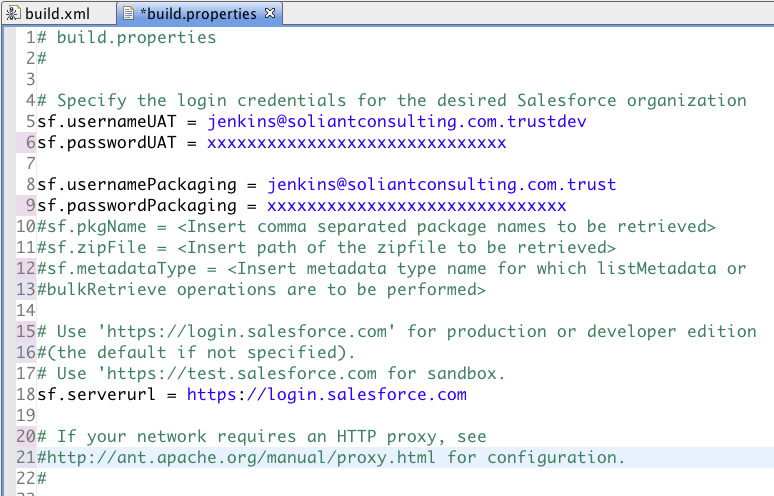

- #Force migration tool deploy from multiple package.xml files archive#
- #Force migration tool deploy from multiple package.xml files code#
Before SFDX feature was introduced, Salesforce development approach had proposed two ways of code distribution and customization build, on the top of the Salesforce platform: With Salesforce, source code and customization can be deployed to a dedicated sandbox related to the development branch. In web development continuous integration build step, source code is deployed to a destination server.
#Force migration tool deploy from multiple package.xml files archive#
In traditional desktop software development continuous integration build step, a binary executable file or Java executable archive file is built and assembled from the source. Continuous integration and delivery in Salesforce Since the code is deployed to a test environment rapidly and test failures have to be fixed before the code can be deployed to that test environment, it is guaranteed that the software can be released from the current stable build of the development branch. Usually when a new Git push command is executed that merges a new feature into a development branch, an automated build step is executed which runs unit tests and deploys code and customization to a test web server. Continuous DeliveryĬontinuous Delivery is a development approach to ensure that the software can be released at any time. We also used GitLab as both the source control repository server and the continuous integration server. Popular continuous integration servers are Jenkins and Travis.

Other version control systems like SVN, TFS, or Mercurial are also used sometimes for continuous integration. The most popular version control system is Git, and the popular repository servers used for this control system are GitHub, GitLab, Bitbucket, Assembla, etc. It is implemented with the help of a version control server and continuous integration build server. Continuous IntegrationĬontinuous Integration is the practice of merging all developer working copies to a shared mainline, several times a day. It simplifies integration with a version control system and helps build a better continuous integration (CI) and delivery (CD) process.īefore going any further. It has been available since the Summer of 2017 and it is constantly evolving. Salesforce Developer Experience (SFDX) is a very promising Salesforce technology, including a new set of features and corresponding development tools. Typical continuous integration build step in SFDX.Scratch Org Allocation and Amount Limits.Deletion of code or metadata from scratch org.How can I enable DX features in production?.Why is it beneficial to use SFDX even if it is not production-ready product?.What is Salesforce Developer Experience?.Continuous integration and delivery using SFDX.Continuous integration and delivery in Salesforce.The following table compares both tools and provides examples of when it’s best to use each tool. The reliability of this tool makes it ideal for enterprise customers who are developing complex projects. You want to be certain that the same components are deployed each time. Let’s say you make the same deployment to dev, test, and user acceptance testing (UAT) sandboxes and production.

Use the Ant Migration Tool to perform repetitive deployments that can be scripted and that use the same components (the same package.xml file). The Ant Migration Tool is a Java/Ant-based command-line utility for moving metadata between a local directory and a Salesforce org. You can also clone a change set and make minor changes. After a change set is locked, you can deploy to all connected environments, secure in the knowledge that nothing can change. Because everything happens in the cloud, you don’t need to bring files to a local file system. For small deployments, the UI is easy to use, allowing you to select components and find dependencies. The easiest way to move changes between a sandbox and a production environment is with a change set. You can use various tools to move metadata from one organization to another.Ĭhange Sets and the Ant Migration Tool are the recommended tools for migration.


 0 kommentar(er)
0 kommentar(er)
